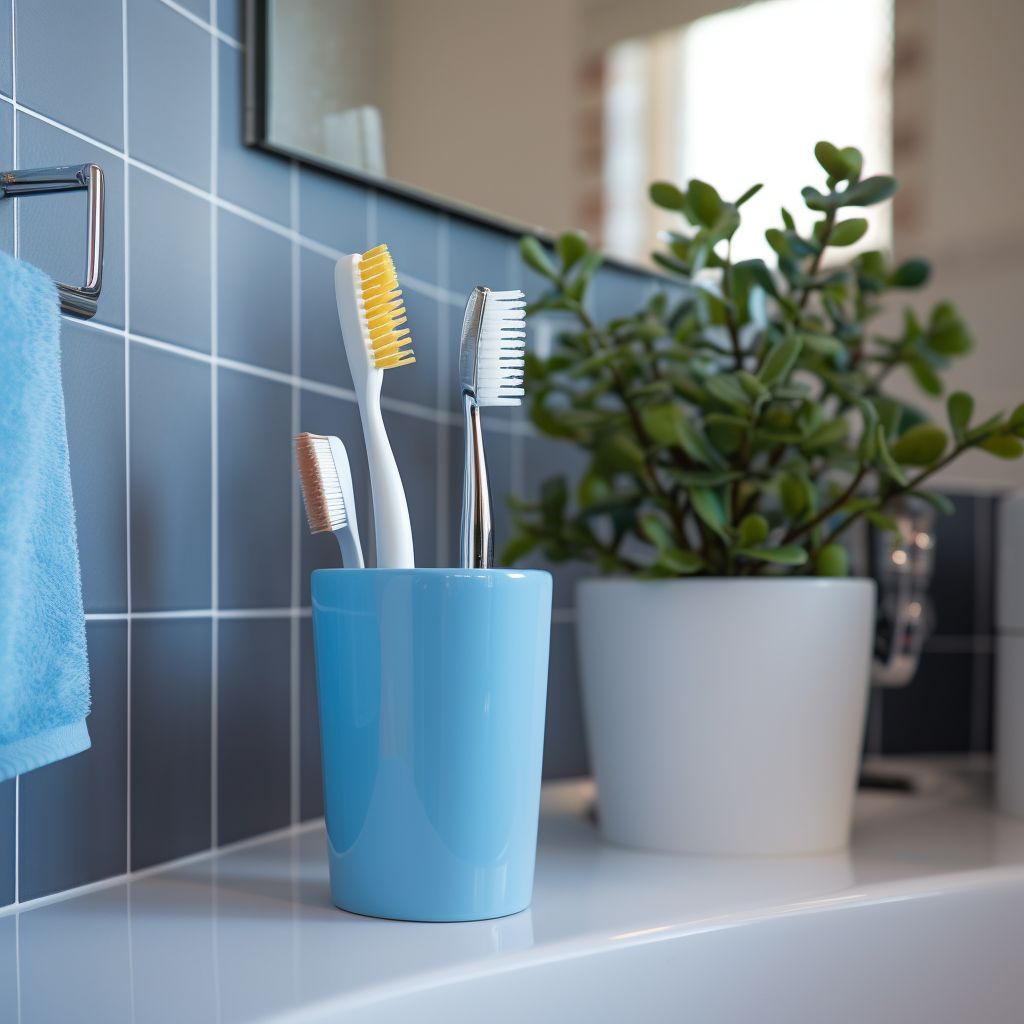
Not Replacing It Regularly: Not replacing your toothbrush regularly is also a mistake. Over time, the bristles of a toothbrush become worn and less effective at cleaning your teeth. Dentists typically recommend replacing your toothbrush every 3-4 months or sooner if the bristles are frayed.
Not Rinsing After Each Use: Failing to rinse your toothbrush thoroughly after each use is another mistake. This allows toothpaste and debris to accumulate on the bristles, promoting bacterial growth.
Storing in a Closed Container: Storing your toothbrush in a closed container or covering it with a cap can trap moisture, creating a breeding ground for bacteria. Allow your toothbrush to air dry in an upright position instead.
Using Unapproved Cleaning Products: Avoid using harsh chemicals, household cleaning products, or anything other than recommended mouthwash or hydrogen peroxide for disinfection. Using unapproved cleaning agents can damage your toothbrush and may introduce harmful substances into your mouth.
The Right Way to Clean Your Toothbrush
Rinse After Each Use:
After brushing your teeth, thoroughly rinse your toothbrush under running water for at least 10-15 seconds. This helps remove residual toothpaste and debris, reducing the chance of bacteria buildup.
Use Antibacterial Mouthwash:
Every few days, you can soak your toothbrush in an antibacterial mouthwash solution for 15-30 minutes. This will help kill any remaining bacteria on the bristles. Be sure to rinse the toothbrush thoroughly with water after this step to remove any residual mouthwash.
Replace Toothbrush Regularly:
Toothbrushes wear out over time and become less effective at cleaning your teeth. Replace your toothbrush every 3-4 months or sooner if the bristles appear frayed or worn. A fresh toothbrush not only cleans better but also reduces the risk of bacterial buildup.
Keep Toothbrushes Dry:
Bacteria thrive in damp environments, so it’s essential to keep your toothbrush dry between uses. After rinsing, shake off excess water and store it in an upright position to allow air circulation. Avoid covering your toothbrush as this can trap moisture and promote bacterial growth.
Avoid Sharing Toothbrushes:
Sharing toothbrushes is a surefire way to transfer bacteria and germs between individuals. Each person should have their own toothbrush to maintain good oral hygiene.
Disinfect Regularly:
For extra protection, you can disinfect your toothbrush by soaking it in a mixture of water and hydrogen peroxide (equal parts) for a few minutes. Rinse thoroughly afterward.
Clean the Toothbrush Holder:
Don’t forget to clean the toothbrush holder or cup where you stor
